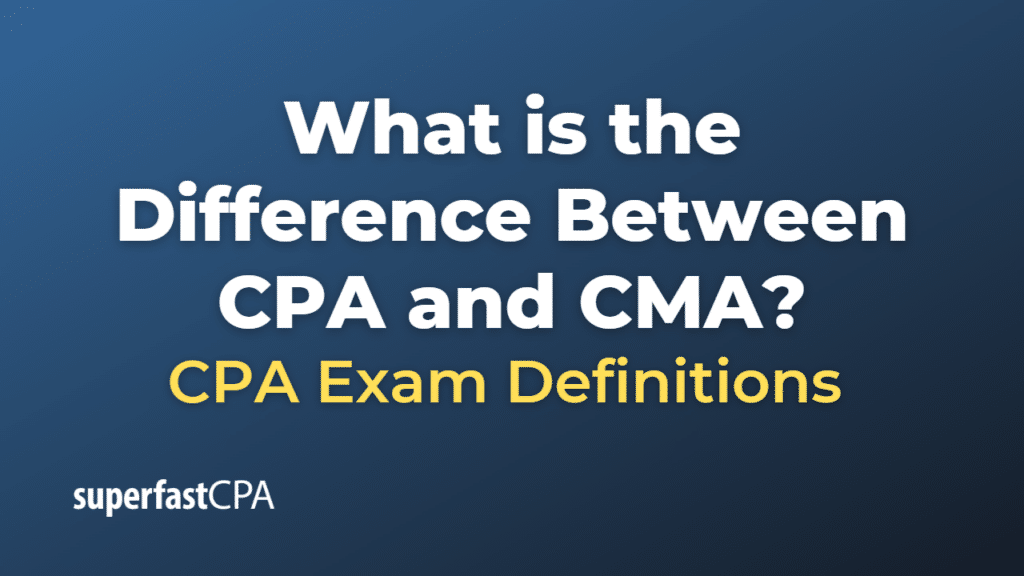Difference Between CPA and CMA
The Certified Public Accountant (CPA) and Certified Management Accountant (CMA) are both prestigious designations in the field of accounting, but they have different focuses and are recognized by different professional bodies.
- Certified Public Accountant (CPA): The CPA designation is recognized globally and is often considered the gold standard in the field of accounting. It’s administered by the American Institute of Certified Public Accountants (AICPA). CPAs are recognized for their expertise in public accounting and their knowledge of auditing, taxation, and financial reporting. They are often involved in activities such as financial auditing, tax preparation, financial consulting, and forensic accounting. To become a CPA, candidates must pass the Uniform CPA Examination and meet specific state licensing requirements, which typically include a certain amount of work experience and education.
- Certified Management Accountant (CMA): The CMA designation is offered by the Institute of Management Accountants (IMA). CMAs are recognized for their expertise in management accounting and financial management. The CMA certification focuses on strategic management, business applications, and financial planning. CMAs often work inside corporations and are involved in activities such as budgeting, financial planning, organizational performance measurement, and decision support. To become a CMA, candidates must pass the CMA examination and meet certain education and experience requirements.
In summary, while both CPA and CMA designations denote expertise in accounting, the CPA is more focused on public accounting and auditing, whereas the CMA is more focused on the strategic management and financial planning aspects of businesses. The best choice between the two depends on one’s career goals and interests in the field of accounting.
Example of the Difference Between CPA and CMA
Here are examples that illustrate the different roles of a CPA and a CMA:
Example of a CPA’s Role:
Let’s say a large corporation needs an external audit of its financial statements to ensure accuracy and compliance with regulations. They would hire a CPA firm to conduct this audit. A CPA at the firm would review the corporation’s financial records, test the transactions and internal control procedures, and provide an opinion on whether the financial statements present a fair and accurate picture of the corporation’s financial condition in accordance with generally accepted accounting principles (GAAP).
Example of a CMA’s Role:
Now, let’s consider a manufacturing company that is trying to decide whether to launch a new product. A CMA working as a management accountant within the company would be involved in this decision-making process. The CMA might prepare detailed cost estimates for producing the new product, conduct a profitability analysis, and assist in preparing financial forecasts. This information would then be used by the company’s executives to make an informed decision about whether to move forward with the new product.
These examples highlight the different focuses of CPAs and CMAs. While both deal with financial information, CPAs typically focus more on auditing and regulatory compliance, while CMAs are more involved in strategic planning and decision-making within businesses.













